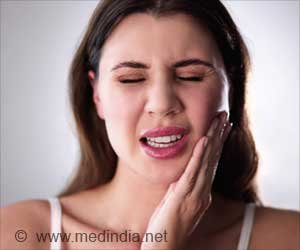Unveiling the Hidden Bacterial Species Behind Tooth Decay

It turns out that there can be another contender hiding in the shadows. Researchers from the University of Pennsylvania School of Dental Medicine, the Adams School of Dentistry, and the University of North Carolina’s Gillings School of Global Public Health have discovered that a bacterial species known as
.
The Penn Dental Medicine and UNC researchers demonstrated that S. sputigena, traditionally connected primarily with
, considerably boosting its cavity-making power in the study, which was published in
).
“This was an unexpected finding that gives us new insights into the development of caries, highlights potential future targets for cavity prevention, and reveals novel mechanisms of bacterial biofilm formation that may be relevant in other clinical contexts,” said study co-senior author Hyun (Michel) Koo DDS, Ph.D., a professor in the Department of Orthodontics and Divisions of Pediatrics and Community Oral Health and Co-Director of the Center for Innovation & Precision Dentistry at Penn Dental Medicine.
Advertisement
Kimon Divaris, Ph.D., DDS, professor at UNC’s Adams School of Dentistry, and Di Wu, Ph.D., associate professor at the Adams School and the UNC Gillings School of Global Public Health, were the study’s other two co-senior authors.
“This was a perfect example of collaborative science that couldn’t have been done without the complementary expertise of many groups and individual investigators and trainees,” Divaris said.
The Role of Bacteria in Dental Caries
Caries is the most common chronic disease in children and adults in the United States and around the world. It occurs when S. mutans and other acid-producing bacteria are not adequately removed by teeth brushing and other oral care treatments, resulting in the formation of a protective biofilm, or “plaque,” on teeth.
These bacteria in plaque absorb carbohydrates from drinks or food and convert them to acids. If plaque is left on the teeth for an extended period, the acids begin to destroy the enamel, eventually resulting in cavities.
In previous studies of plaque bacterial components, scientists discovered a number of additional species in addition to S. mutans. These include Selenomonas species, an “anaerobic,” non-oxygen-requiring group of bacteria found beneath the gum in cases of gum disease.
However, this is the first time a specific Selenomonas species has been linked to cavity formation.
The UNC researchers collected plaque samples from the teeth of 300 youngsters aged 3-5 years, half of whom had caries, and examined the samples using a battery of advanced assays with the help of Koo’s laboratory.
The tests included bacterial gene activity sequencing of the samples, studies of the biological pathways implicated by this bacterial activity, and even direct microscopic imaging. The findings were then verified on a second group of 116 plaque samples from children aged 3 to 5 years old.
S. sputigena and S. mutans: A Sticky Duo Causing Dental Decay
Although S. sputigena is only one of several caries-linked bacterial species in plaque and does not induce caries on its own, the data reveal that it has a remarkable potential to collaborate with S. mutans to accelerate the caries process.
S. mutans have been shown to exploit available sugar to produce sticky structures known as glucans, which are part of the protective plaque environment. These glucans can capture S. sputigena, which has little appendages that allow it to travel across surfaces, according to the researchers.
S. sputigena proliferates quickly once trapped, employing its cells to form honeycomb-shaped “superstructures” that encase and protect S. mutans. The unanticipated collaboration results in a highly enhanced and concentrated production of acid, which significantly worsens caries severity, as the researchers demonstrated using animal models.
The findings, according to Koo, demonstrate a more intricate microbial interaction than previously assumed and provide a better knowledge of how childhood cavities developan understanding that could lead to better methods of cavity prevention.
“Disrupting these protective S. sputigena superstructures using specific enzymes or more precise and effective methods of tooth-brushing could be one approach,” Koo said.
The researchers now plan to study in more detail how this anaerobic motile bacterium ends up in the aerobic environment of the tooth surface.
“This phenomenon in which a bacterium from one type of environment moves into a new environment and interacts with the bacteria living there, building these remarkable superstructures, should be of broad interest to microbiologists,” Koo said.
Reference :
- Selenomonas sputigena acts as a pathobiont mediating spatial structure and biofilm virulence in early childhood caries – (https:pubmed.ncbi.nlm.nih.gov/37217495/)
Source: Medindia
Source link
#Unveiling #Hidden #Bacterial #Species #Tooth #Decay



